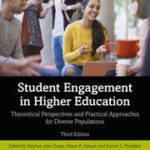Understanding in education refers to the ability to comprehend and make meaning of concepts and ideas. It involves assimilating information, connecting new knowledge with existing knowledge, and being able to apply that knowledge in various contexts.
Understanding is crucial in effective learning as it goes beyond mere memorization and enables students to critically analyze, evaluate, and create their own knowledge. It allows for deeper learning experiences and promotes higher-order thinking skills such as problem-solving, critical thinking, and creativity.
With a solid understanding of concepts, learners are empowered to use their knowledge to construct new ideas, make connections, and engage in meaningful learning experiences. Thus, understanding plays a vital role in education as it helps students become active, independent, and lifelong learners.
Importance Of Understanding In Education
htmlEnhancing Learning Outcomes: Understanding plays a crucial role in education, as it helps enhance learning outcomes. When students truly understand a concept, they can apply it to different scenarios and solve problems more effectively. By providing a solid foundation of understanding, educators can facilitate deeper learning experiences.
Fostering Critical Thinking: Developing understanding in education fosters critical thinking skills. It encourages students to question, analyze, and evaluate information, enabling them to make informed decisions and become independent learners. By fostering critical thinking, educators empower students to think critically and approach learning with curiosity and creativity.
Promoting Application of Knowledge: Understanding goes beyond memorization; it promotes the application of knowledge. When students understand the underlying principles and concepts, they can apply them to real-world situations. This enables them to connect their learning to practical scenarios, increasing engagement and retention of knowledge.
| Enhancing Learning Outcomes | Fostering Critical Thinking | Promoting Application of Knowledge |
|---|---|---|
| · Enhances learning outcomes | · Develops critical thinking skills | · Bridges the gap between theory and practice |
| · Enables problem-solving abilities | · Encourages independent learning | · Enhances engagement and retention |
Components Of Understanding
Understanding is a vital aspect of education and encompasses three essential components: conceptual understanding, procedural understanding, and metacognitive understanding.
Conceptual Understanding
Conceptual understanding involves grasping the fundamental ideas and principles within a subject or topic. It goes beyond mere memorization and encourages learners to delve deeper into the underlying concepts. By connecting new knowledge to existing frameworks, students can develop a comprehensive understanding of the subject matter.
Procedural Understanding
Procedural understanding focuses on the processes and methods involved in executing tasks or solving problems. It emphasizes the practical application of knowledge and helps students develop the skills necessary to carry out complex procedures with accuracy and efficiency. Through practice and hands-on experience, learners gain a deeper understanding of how to navigate and implement various procedures.
Metacognitive Understanding
Metacognitive understanding involves self-awareness and the ability to monitor and regulate one’s thinking processes. It enables students to reflect on their own learning, identify strategies that work best for them, and make adjustments when faced with challenges. By nurturing metacognitive skills, learners become more autonomous, adaptable, and effective in their learning journeys.
Developing Conceptual Understanding
Developing Conceptual Understanding
Conceptual understanding is a fundamental aspect of education that allows students to acquire knowledge and apply it to real-life situations. By relating concepts to real-life examples, students can develop a deeper understanding of the subject matter. This not only enhances their comprehension but also encourages critical thinking and problem-solving skills. Teachers can foster conceptual understanding by incorporating real-life scenarios and applications into their lessons. This approach helps students connect abstract ideas to practical situations, making the learning experience more engaging and meaningful.
Encouraging Inquiry-Based Learning
Promoting inquiry-based learning is another effective method to foster understanding in education. This approach emphasizes student-led investigations and exploration, allowing learners to take ownership of their learning process. By encouraging curiosity and questioning, teachers can facilitate a deeper understanding of concepts. Inquiry-based learning enables students to actively engage with the subject matter, fostering critical thinking, problem-solving, and information synthesis skills.
Utilizing Visual Aids and Illustrations
Visual aids and illustrations play a crucial role in promoting understanding in education. They provide visual representations of complex ideas, making them easier to comprehend and remember. Visual aids can include diagrams, graphs, charts, and images that support the text and enhance students’ understanding of the content. By presenting information in a visual format, teachers cater to different learning styles and enhance the overall learning experience. Visual aids also stimulate students’ cognitive processes, facilitating knowledge retention and deeper understanding.
Promoting Procedural Understanding
What is Understanding in Education
Promoting Procedural Understanding
- Providing Step-by-Step Instructions
- Scaffolded Learning Approaches
- Offering Hands-On Experiences and Practice
In education, promoting procedural understanding is crucial for effective learning. Students need to grasp the steps and processes involved in a concept or skill. Providing step-by-step instructions helps students break down complex problems into manageable parts, enhancing their comprehension. Additionally, employing scaffolded learning approaches supports students in gradually building their understanding through structured guidance and support.
Furthermore, offering hands-on experiences and opportunities to practice what they’ve learned aids in consolidating procedural understanding. Engaging in practical application allows students to connect theoretical knowledge with real-world scenarios, reinforcing their understanding and retention. By following a well-designed curriculum that incorporates these strategies, educators can cultivate students’ procedural understanding, empowering them to apply their knowledge confidently.
Nurturing Metacognitive Understanding
Encouraging reflection and self-assessment is a crucial aspect in nurturing metacognitive understanding in education. By providing opportunities for students to reflect on their own learning process, it allows them to gain deeper insights into their own strengths and weaknesses. This can be done through regular self-assessments, where students evaluate their own progress and identify areas for improvement. Through this process, they become aware of their learning strategies and can make necessary adjustments to enhance their performance.
Teaching problem-solving strategies is another effective way to foster metacognitive understanding. By teaching students different problem-solving techniques, such as trial and error, brainstorming, and breaking down complex problems into smaller, manageable parts, they develop a deeper understanding of how to approach and solve problems. This not only enhances their critical thinking skills, but also teaches them to reflect on their problem-solving processes and make adjustments as needed.
Enhancing communication skills is also vital for nurturing metacognitive understanding. Effective communication requires students to process and articulate their thoughts in a clear and concise manner. By providing opportunities for structured discussions, presentations, and debates, students can practice and refine their communication skills. Through these activities, they not only gain confidence in expressing their ideas, but also develop metacognitive awareness of their own communication strengths and weaknesses.
Strategies To Assess Understanding
Understanding in education refers to the ability of students to comprehend and apply knowledge effectively. Assessing understanding is a crucial aspect of the education process. There are various strategies that can be employed for this purpose. Formative assessment techniques involve ongoing evaluations that provide feedback to students and teachers, enabling them to identify areas of strength and areas that need improvement. Performance-based assessments assess students’ understanding through real-world applications and tasks, allowing them to demonstrate their knowledge and skills. Self-assessment tools empower students to reflect on their own learning and gauge their understanding of the subject matter. These strategies play a vital role in promoting deeper learning and ensuring that students attain a deep level of understanding in their education journey.
Cultivating Understanding In Different Subjects
Understanding is a fundamental aspect of education that is cultivated across various subjects. In mathematics, problem-solving techniques play a crucial role in developing a deep comprehension of numerical concepts. Mathematical reasoning skills, such as logical thinking and pattern recognition, further enhance students’ understanding of complex mathematical equations. In the field of science, students are exposed to experimental methodologies, enabling them to gain hands-on experience and develop scientific inquiry skills. Language arts focus on critical reading strategies, fostering an understanding of diverse texts and literary devices. Effective communication skills are also emphasized, helping students articulate their thoughts clearly. Social studies encourage analytical thinking skills, allowing students to explore historical events and societies, while fostering cross-cultural understanding. In physical education, empathy and teamwork are nurtured, teaching students how to collaborate and support each other. Additionally, fitness and health awareness are promoted, instilling a holistic understanding of physical well-being.
Challenges In Promoting Understanding
Challenges in Promoting Understanding:
Overemphasis on Memorization: One of the significant challenges in promoting understanding in education is the overemphasis on memorization. Instead of encouraging critical thinking and deep comprehension, many educational systems prioritize rote learning. This approach often leads to superficial understanding as students focus on memorizing facts and figures rather than engaging with the material.
Limited Time for In-Depth Exploration: Another obstacle in fostering understanding is the limited time available for in-depth exploration. With a packed curriculum and time constraints, educators may struggle to delve into topics thoroughly. As a result, students may not have the opportunity to develop a comprehensive understanding of a subject and instead only scratch the surface.
Lack of Teacher Training and Support: Additionally, the lack of teacher training and support can hinder the promotion of understanding. Teachers need to be equipped with effective strategies to facilitate comprehension and higher-order thinking skills among their students. Without proper training and support, educators may find it challenging to create an engaging learning environment that fosters deep understanding.

Credit: brill.com
Frequently Asked Questions On What Is Understanding In Education
What Is Understanding In Teaching And Learning?
Understanding in teaching and learning refers to grasping knowledge and concepts effectively. It involves comprehending information, making connections, and being able to apply it in practical situations.
Why Is Understanding Important In Teaching?
Understanding is crucial in teaching because it enables effective communication and knowledge transfer. When teachers understand their subjects and students, they can tailor their instruction to meet individual needs, promote deeper learning, and ensure comprehension. This facilitates student engagement and maximizes learning outcomes.
What Is The Purpose Of Understanding?
Understanding serves the purpose of gaining knowledge, clarity, and comprehension. It enables individuals to make informed decisions, solve problems effectively, and communicate ideas more efficiently. Understanding enhances learning and personal growth, fostering empathy and cooperation in various aspects of life.
What Is The Difference Between Knowledge And Understanding In Education?
In education, knowledge refers to factual information while understanding involves comprehension and application of that knowledge. Knowledge is about what we know, while understanding is about how we use and make sense of what we know.
Conclusion
Understanding in education is a fundamental aspect that goes beyond mere memorization. It involves comprehension, critical thinking, and application of knowledge to real-life situations. A strong foundation of understanding allows students to engage with their subjects, foster curiosity, and achieve meaningful learning outcomes.
By prioritizing understanding, educators can empower students to become lifelong learners who are equipped with the skills necessary to navigate an ever-changing world. So, let us strive for a holistic approach to education that emphasizes understanding and prepares students for success in the 21st century.






